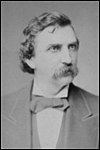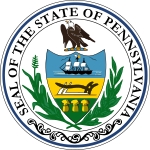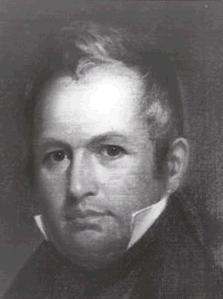
Joseph Ritner was the eighth governor of Pennsylvania, and was a member of the Anti-Masonic Party. Elected governor during the 1835 Pennsylvania gubernatorial election, he served from 1835 to 1839.
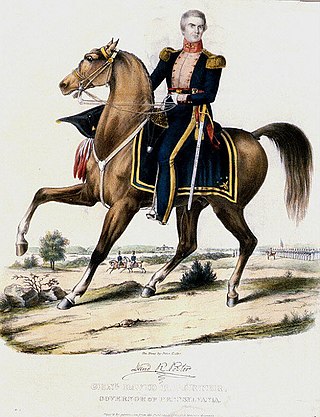
David Rittenhouse Porter was the ninth governor of Pennsylvania. Voted into office during the controversial 1838 Pennsylvania gubernatorial election, which was characterized by intense anti-Masonic and anti-abolitionist rhetoric during and after the contest that sparked the post-election Buckshot War, he served as the state's chief executive officer from 1839 to 1845.

William Fisher Packer was an American politician from Pennsylvania who served as the 14th governor of Pennsylvania from 1858 to 1861.

John Frederick Hartranft was an American politician and military officer who read the death warrant to the individuals who were executed on July 7, 1865, for conspiring to assassinate American President Abraham Lincoln. Previously having achieved the rank of major general of the Union Army during the American Civil War, he had also been awarded the U.S. Medal of Honor for his actions in the First Battle of Bull Run.
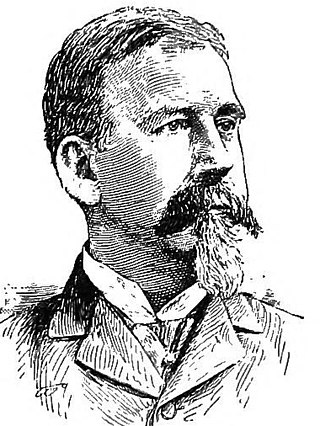
Daniel Hartman Hastings was the 21st governor of Pennsylvania, serving from 1895 to 1899.

Andrew Gregg Curtin was an American lawyer and politician. He served as the 15th governor of Pennsylvania during the American Civil War, helped defend his state during the Gettysburg Campaign, and oversaw the creation of the National Cemetery and the ceremony in which Abraham Lincoln delivered his famous Gettysburg Address.

Charles Rollin Buckalew was an American lawyer, diplomat, and Democratic Party politician from Pennsylvania. He represented the state for one term in the United States Senate, where he was an advocate for proportional representation and cumulative voting, from 1863 to 1869.

The 1998 Pennsylvania gubernatorial election was held on November 3, 1998. The candidates were incumbent Republican Tom Ridge, Democrat Ivan Itkin, Constitutionalist Peg Luksik and Libertarian Ken Krawchuk. Ridge, a popular moderate, won with 57 percent of the votes cast.

The 1990 Pennsylvania gubernatorial election was held on November 6, 1990. Incumbent Democratic governor Robert P. Casey easily defeated Republican Barbara Hafer. Governor Casey defeated Hafer by a margin of 35.29%, and carried 66 out of 67 Pennsylvania counties.

The 1860 Pennsylvania gubernatorial was held on October 9, almost one month before Presidential election. Andrew Curtin of the newly formed Republican Party won the governor's mansion over Democrat Henry Donnel Foster.

The 1922 Pennsylvania gubernatorial election occurred on November 7, 1922. Incumbent Republican governor William Sproul was not a candidate for re-election. Republican candidate Gifford Pinchot defeated Democratic candidate John A. McSparran to become Governor of Pennsylvania. John Stuchell Fisher unsuccessfully sought the Republican nomination.

The 1926 Pennsylvania gubernatorial election occurred on November 2, 1926. Incumbent Republican governor Gifford Pinchot was not a candidate for re-election. Republican candidate John Fisher defeated Democratic candidate Eugene C. Bonniwell to become Governor of Pennsylvania. Edward E. Beidleman, Thomas Wharton Phillips Jr., and John K. Tener unsuccessfully sought the Republican nomination.

The 1934 Pennsylvania gubernatorial election occurred on November 6, 1934. Incumbent Republican governor Gifford Pinchot was not a candidate for re-election.

The 1938 Pennsylvania gubernatorial election occurred on November 8, 1938. Incumbent Democratic governor George Howard Earle III was not a candidate for re-election. Republican candidate Arthur James defeated Democratic candidate Charles Alvin Jones to become Governor of Pennsylvania. Gifford Pinchot unsuccessfully sought the Republican nomination, while Thomas Kennedy unsuccessfully sought the Democratic nomination.

The 1942 Pennsylvania gubernatorial election occurred on November 3, 1942. Incumbent Republican governor Arthur James was not a candidate for re-election. Republican candidate Edward Martin defeated Democratic candidate F. Clair Ross to become Governor of Pennsylvania.

The 1863 Pennsylvania gubernatorial election occurred on October 13, 1863. Incumbent governor Andrew Gregg Curtin, a Republican, was a candidate for re-election. Curtin defeated Democratic candidate George Washington Woodward to win another term.

The 1875 Pennsylvania gubernatorial election occurred on November 2, 1875. Incumbent governor John F. Hartranft, a Republican, was a candidate for re-election. Hartranft defeated Democratic candidate Cyrus L. Pershing to win another term.
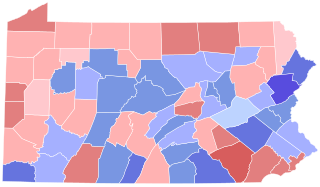
The 1878 Pennsylvania gubernatorial election occurred on November 5, 1878. Incumbent governor John F. Hartranft, a Republican, was not a candidate for re-election.

On January 15, 1867, Simon Cameron was elected to the United States Senate by the Pennsylvania General Assembly for the third time; it had previously chosen him in 1845 and 1857. The legislature voted for Cameron over the incumbent, Senator Edgar Cowan, who, though a Republican, was endorsed by the Democratic legislative caucus. With the Republican Party holding a large majority in the legislature, the main battle was for its endorsement: the caucus of Republican legislators had voted for Cameron over Governor Andrew Curtin.

